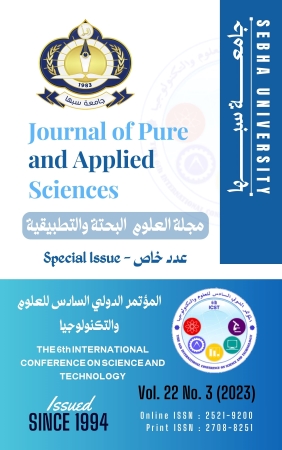An Investigation of The J-V Curve for N-AlGaAs/p-GaAs Heterojunction Solar Cell Due to Influence of Surface Recombination Velocity
Abstract
Theoretical analysis can substantially reduce the time and costs required for developing a specific device such as solar cell, by allowing the designer to take a suitable geometry and doping profile prior to the fabrication stage. In this paper, theoretical analysis of electric field and electric potential within depletion layer of N-AlGaAS/p-GaAs has been made by solving Poisson's equation numerically using finite difference method (FDM) with Fortran program. Continuity equations of charge carriers in quasi- nature regions in N and p-layers were solved numerically to obtain the current density curve (J-V curve). Boundary conditions related to surface recombination velocity were implemented in this analysis. The effect of front and back surface recombination velocity on the excess minority carriers distribution and photocurrent have been studied. The aim of this work is to find the influence of surface recombination velocity in the output of N-AlGaAs/p-GaAs heterojunction solar cell. The analysis showed that, the low surface recombination velocity produce high efficient solar cell.
Full text article
Authors
Copyright (c) 2023 Journal of Pure & Applied Sciences

This work is licensed under a Creative Commons Attribution 4.0 International License.
In a brief statement, the rights relate to the publication and distribution of research published in the journal of the University of Sebha where authors who have published their articles in the journal of the university of Sebha should how they can use or distribute their articles. They reserve all their rights to the published works, such as (but not limited to) the following rights:
- Copyright and other property rights related to the article, such as patent rights.
- Research published in the journal of the University of Sebha and used in its future works, including lectures and books, the right to reproduce articles for their own purposes, and the right to self-archive their articles.
- The right to enter a separate article, or for a non-exclusive distribution of their article with an acknowledgment of its initial publication in the journal of Sebha University.
Privacy Statement The names and e-mail addresses entered on the Sabha University Journal site will be used for the aforementioned purposes only and for which they were used.

